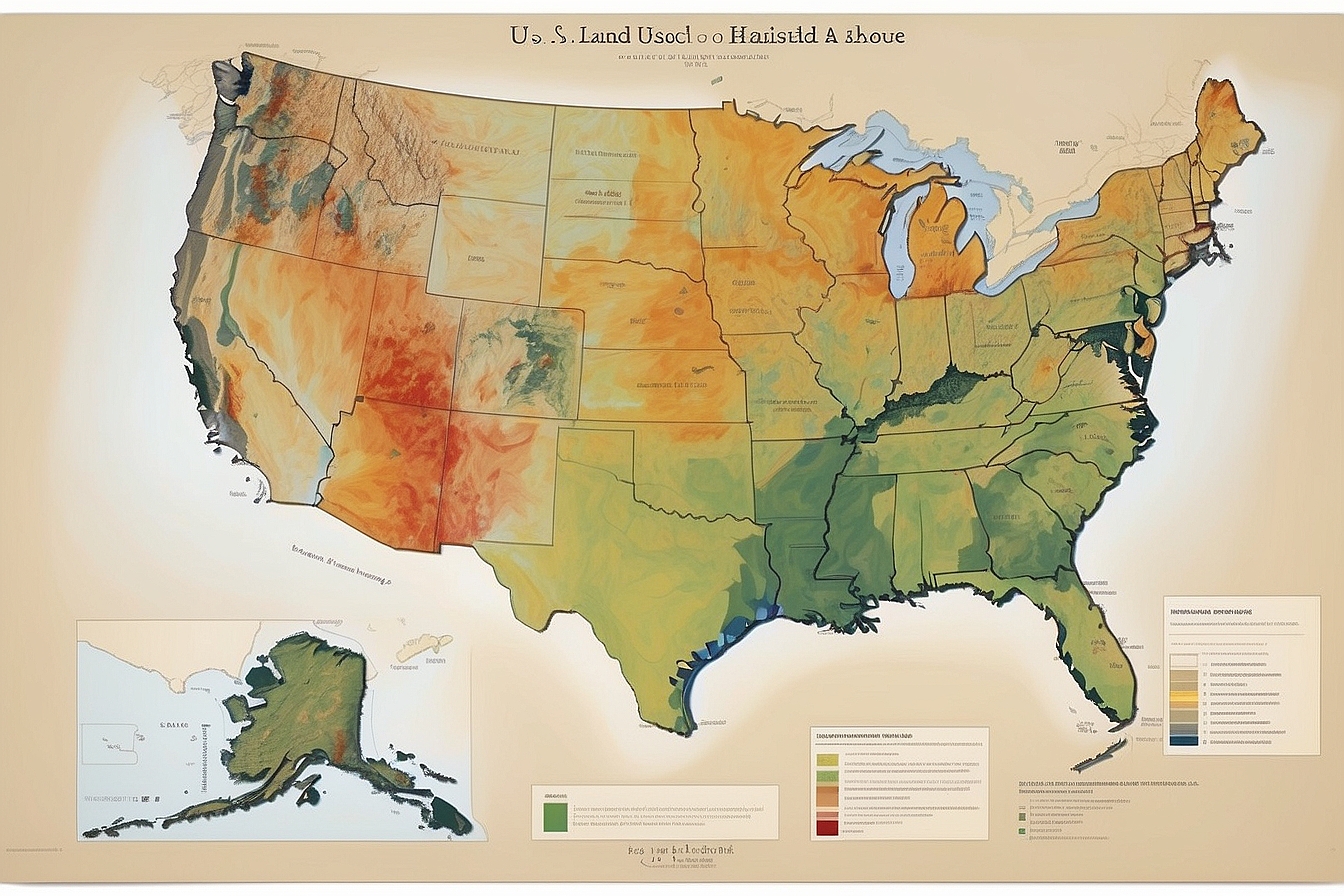Navigating the perfect location for renewable energy endeavours can be quite the conundrum, and believe us, we understand your frustrations. It’s a startling truth that land use disagreements pop up in as many as 90% of proposed schemes.
Our analyses probe this critical matter with finesse, proffering savvy remedies and innovative strategies. Join us on this insightful journey to surmount these obstacles with grace!
Key Takeaways
- Finding the right spot for renewable energy projects is tricky due to land use conflicts and local opposition.
- Involving land trusts and following proper standards helps balance energy needs with environmental protection.
- Open dialogue with communities and stakeholders is key to overcoming challenges in renewable energy siting.
- Careful site selection that considers ecological impact can align renewable initiatives with conservation goals.
- Collaborative efforts lead to better decision – making, ensuring sustainable development of renewable energy.
Challenges of Renewable Energy Siting
Land use battles and local opposition often hinder the development of renewable energy projects, while environmental concerns add another layer of complication to the siting process.
Land use battles
We face significant hurdles in the quest to allocate land for renewable energy installations. Every wind farm siting or solar panel placement becomes a battlefield, where different interests collide.
Farmers may worry about losing valuable agricultural land, while conservationists fear the ecological impact on local habitats.
In our decision-making processes, we must balance the urgent need for clean energy projects against the rightful concerns of land preservation. This often leads to heated debates with locals who resist largescale renewable energy projects near their communities.
They raise valid points about maintaining the character of rural areas and protecting indigenous wildlife. We strive to listen actively and respond thoughtfully as these are challenges that require our collective wisdom and sensitivity if we’re going to move forward together towards climate change mitigation.
Local opposition
Local opposition to renewable energy siting can present significant barriers to sustainable development. Embracing the concerns and perspectives of local communities is vital in ensuring that renewable energy projects are successful and well-received.
Engaging with local stakeholders, listening to their worries, and finding common ground can be key to addressing opposition and building support for renewable energy initiatives. Collaborative efforts between developers, community leaders, and concerned citizens can lead to more carefully planned and environmentally sensitive siting decisions that serve the interests of both the community and sustainable energy needs.
Involving communities in decision-making processes around land use conflicts helps foster understanding and cooperation. By acknowledging local concerns about ecological impact assessment alongside pressures for energy development, it becomes possible to develop solutions that balance environmental impacts with resource allocation effectively.
Environmental concerns
Environmental concerns are at the forefront of renewable energy siting challenges. The impact on ecosystems, wildlife habitats, and water resources must be carefully considered. Balancing the need for clean energy with land conservation is crucial in sustainable development.
Mitigating effects on local biodiversity and preserving natural landscapes are essential priorities.
Renewable energy planning should prioritise minimising negative impacts on the environment, emphasising responsible land use practices. Encouraging a thorough environmental assessment before any developments can help safeguard against potential harm to delicate ecosystems.
Solutions for Addressing Renewable Energy Siting Challenges
Engaging land trusts can help in finding mutually beneficial solutions for renewable energy siting. Utilising relevant standards and practices will ensure responsible and sustainable development, while collaborating with stakeholders is crucial for building consensus on siting decisions.
Engaging land trusts
Engaging land trusts can help facilitate renewable energy siting in a more collaborative and sustainable manner. By involving land trusts in the decision-making processes, we can utilise their expertise to find mutually beneficial solutions for conservation and energy development pressure.
- Partnering with land trusts allows for the identification of suitable areas for renewable energy projects while preserving valuable natural landscapes.
- Land trusts often possess local knowledge and connections that can aid in navigating through land use battles and addressing environmental concerns.
- Collaborating with land trusts provides an opportunity to integrate renewable energy planning with conservation efforts, ensuring a balanced approach to sustainable development.
- Engaging land trusts fosters community involvement and support, which is crucial in overcoming local opposition to renewable energy siting initiatives.
- By working with land trusts, relevant standards and practices can be implemented to ensure responsible and environmentally conscious energy development.
- Building partnerships with land trusts also involves finding common ground with stakeholders, leading to more inclusive and holistic decision-making processes.
Utilising relevant standards and practices
As we collaborate with land trusts on renewable energy siting, it’s also crucial to utilise relevant standards and practices to ensure responsible development. Here are some important considerations:
- Adhering to government – set guidelines for renewable energy development can help minimise the impact on sensitive ecosystems and habitats while ensuring the sustainable use of land resources.
- Implementing best practices in site selection, such as avoiding prime agricultural land or areas with high biodiversity, can help strike a balance between renewable energy expansion and conservation efforts.
- Following established environmental impact assessment procedures can provide a framework for evaluating potential effects on land use, biodiversity, and local communities before moving forward with siting decisions.
- Integrating planning tools like Geographic Information Systems (GIS) mapping can aid in identifying suitable locations for renewable energy projects based on factors such as land availability, proximity to existing infrastructure, and environmental considerations.
- Considering landscape-level planning approaches can help assess the cumulative effects of multiple energy developments on a broader scale, contributing to more informed decision-making processes.
Collaborating and finding common ground with stakeholders
To address the challenges of renewable energy siting, collaborating and finding common ground with stakeholders is crucial. Here’s how it can be achieved:
- Engage in open dialogue with local communities to understand their concerns and priorities.
- Communicate the benefits of renewable energy projects, such as job creation and economic growth, to garner support.
- Collaborate with environmental organisations to ensure that siting decisions align with conservation efforts.
- Seek input from all relevant stakeholders, including landowners, government agencies, and indigenous communities.
Conclusion
In conclusion, renewable energy siting presents complex challenges. Engaging land trusts and utilising relevant standards are crucial. Collaborating with stakeholders helps find common ground.
These actions are essential for sustainable land development decisions.
FAQs
1. What is the challenge of renewable energy siting with regard to land?
The main challenge lies in making sound decisions on land development for setting up renewable energy projects without harming environmental or community interests.
2. How do decision-making processes affect renewable energy siting?
Effective decision-making processes are crucial as they determine where and how renewable energy infrastructure is sited, balancing ecological concerns with energy needs.
3. Can land trusts help with the challenges of siting renewable energy?
Yes, land trusts have a significant role in responding to these challenges by conserving important lands and guiding sustainable site selection for renewable projects.
4. Why is it important to consider land development when planning for renewable energy?
Considering land development ensures that the placement of renewable energy sources like wind turbines or solar panels respects natural habitats and minimises impact on local ecosystems.





